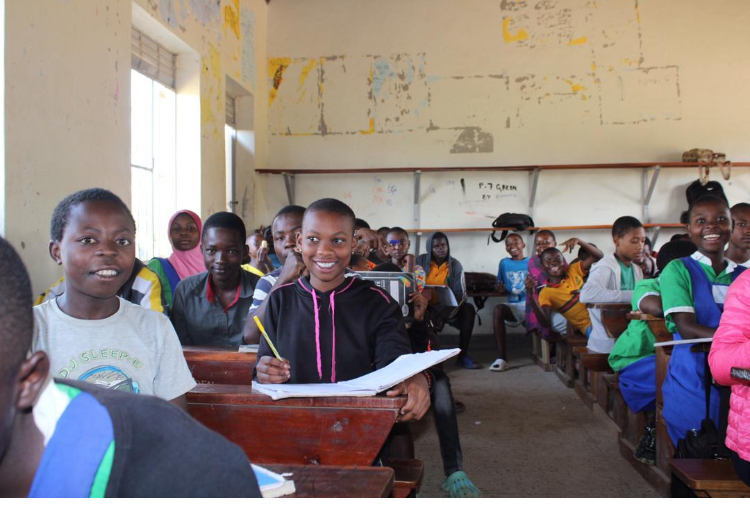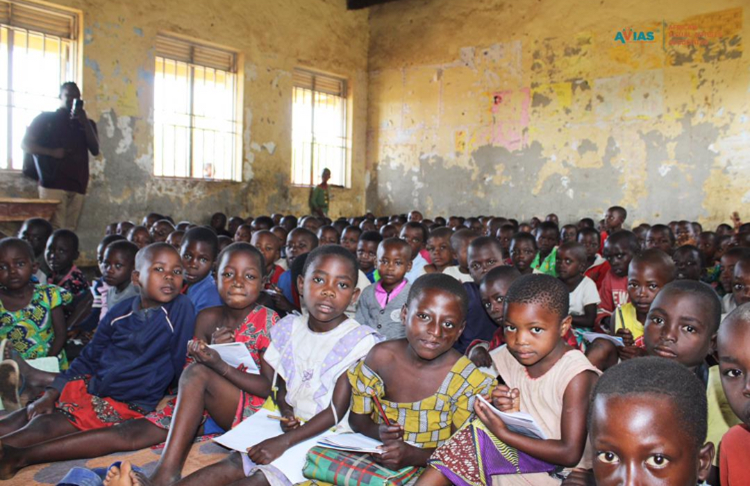
Many believe the UK has a particular problem with refugees and ‘illegal’ immigrants, but migration is a global issue. Uganda, one of the poorest countries in the world, hosts nearly 1.6 million refugees where 61% are children who have fled ongoing conflict in neighbouring South Sudan, eastern DR Congo and Burundi. More continue to arrive every day.
Uganda’s open-door policy is recognised as one of the most progressive in the world. Refugees there have access to the same services as Ugandans; freedom of movement, the right to work, and land to farm. However, there are critical funding shortages, services are overwhelmed, and the humanitarian needs remain enormous. Large numbers of both the refugee and host community children are still without access to healthcare, education, protection, and livelihoods.
This blog is to introduce readers to how young people in Uganda are confronting this problem through the arts. It involves a joint project with Associate of the Sidney De Haan Research Centre for Arts and Health (Jonathan Barnes), members of the African Visual Artists Associates (AVIAS) and the Global Arts in Medicine Fellowship.
Uganda is unique in not following a policy of refugee encampment. Most refugees reside in rural settlements alongside Ugandan citizens. Children learn in settlement schools run by government and charities and despite major financial and overcrowding difficulties, they cover the same ground as standard primary schools.
A project team under recent arts graduate; Ssembatya Hikimah, made a preliminary assessment in two, 4000 strong primary schools serving the Rwamwanja settlement in the West of their country. Their phase one scoping visits found the following::
- Significant psychological challenges amongst many children such as depression, stress, eco anxiety and sexual harassment, as a result of their often-traumatic experience of violence and displacement.
- An almost complete lack of psycho/social support services for individuals or groups
- No structured art or arts curriculum
- Heavily overcrowded classrooms some with little furniture and few resources
- Lack of integrated and holistic approaches to the curriculum
- Teaching staff untrained in integration or holistic approaches to education and curriculum.
In their proposals to the Ugandan Prime Minister’s Office, the team has committed themselves to bringing creative endeavours such as: art, pottery, music and drama to the schools. They will adopt the following approaches in their inputs in the settlement schools:
- Training the intervention team in methods of promoting creative activity and the research supporting the psycho/social benefits of creative activity.
- Focusing on culturally relevant and trauma informed approaches to the arts; based on creating conditions of safety, security, trustworthiness, choice, collaboration, cultural sensitivity, resilience and individual strengths.
- Providing training and sustainable resources for local educators to integrate arts across the curriculum.
- Emphasising the role of arts as a medium for students to communicate experiences, emotion and aspiration.
- Seeking evidence of the role of the arts in facilitating communication, resilience and psychological healing.
- Addressing large class sizes (often 100 pupils) by devising a peer-mentorship programme within each class to provide support to classmates.
The team concluded their report in the following words:
“Incorporating arts and cultural integration into education within Rwamwanja Settlement Camp is essential for addressing the diverse needs arising from refugee students’ personal and cultural values, promoting their psychological well-being, and fostering a sense of identity and empowerment. By recognizing the relevance of arts in education and implementing targeted interventions, we can create inclusive and nurturing learning environments that enable students to thrive amidst adversity.”
Their voluntarily funded, practical, and arts-based response to this situation starts at the end of May 2024. We will keep you up to date with developments in the Uganda refugees’ arts and wellbeing project via this blog.
Written by SDHRC Associate; Jonathan Barnes.

 Sidney De Haan Research Centre for Arts and Health
Sidney De Haan Research Centre for Arts and Health Charlotte Grainger
Charlotte Grainger
 679
679

